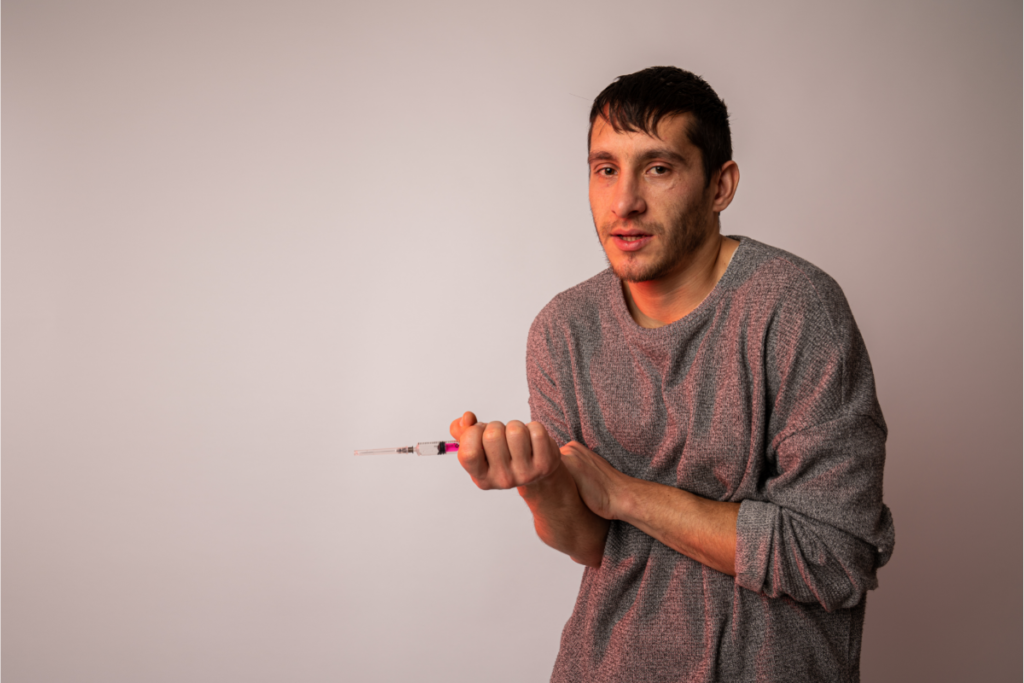The topic of mothers and alcohol addiction is more openly talked about today. However, some people hold on to the old stereotype of the perfect mother. She’s the one who makes the meals, keeps the house clean, and is always there for her husband and children. And, she also manages a career and keeps her appearance and health in top shape.
When a busy mom struggles to uphold the image of perfect motherhood, she becomes overwhelmed. So, a little glass of wine after dinner helps her relax. Before long, one glass becomes two, and alcohol addiction sneaks up on her.
Are Women Drinking More These Days?
For the last century, women have been catching up to men in alcohol use, binge drinking, or alcohol use disorders. In the past, the ratio was 3-1 men vs. women. Today it is closer to 1-1 according to many studies.
Most women who drink are looking for a way to cope with their demanding role as wife, mother, and career woman. Researchers suggest that using alcohol to cope increases the risk of developing alcohol use disorder. They also show that women are more likely than men to drink to cope.
Women are drinking more for many reasons. But, in the past two years, the virus pandemic has affected their alcohol consumption. Because of the lockdowns and the sense of isolation and helplessness, many men and women are drinking more.
A Cycle of Shame, Guilt, and Alcohol Addiction
A woman can manage to hide the drinking from her family. For a while, anyway. But, the shame and guilt she feels about the deception cause more drinking. The cycle continues until alcohol addiction becomes her biggest problem.
Studies show that women are more likely than men to struggle with anxiety and depression. Alcohol abuse contributes to an increase in these disorders, especially among women.
Through the years, alcohol researchers focused mainly on men. But, in recent years, they have learned more about the effects alcohol has on women. Their findings are quite surprising.
How Alcohol Affects Women Differently Than Men
Alcohol affects women differently than men in several ways. Let’s take a look at some of the reasons:
Higher BAC
Women’s bodies have less body water than men’s. So, alcohol isn’t absorbed the same. Women retain a higher concentration of alcohol in their blood and tissues. Even after drinking the same amount as a man. Also, a woman’s body has less dehydrogenase than men’s bodies. This enzyme helps break down alcohol before it enters the bloodstream. Basically, one drink for a woman equals two drinks for a man.
Women Develop Alcohol Addiction Quicker
Women take less time to develop alcohol addiction than men. Some things that cause this increased vulnerability can include hormone levels, physiology, genetics, and neurobiology.
Greater Risk of Alcohol-Related Disease
Studies show that alcohol-induced cirrhosis and cardiomyopathy develop in women faster than men. Women are also more vulnerable to alcohol-related brain damage, liver failure, breast cancer, and heart problems. According to data from the National Institute on Alcohol Abuse and Alcoholism (NIAAA), female alcoholics have greater death rates than men.
Of course, no woman plans to become addicted to alcohol. They are vulnerable for many reasons as discussed above. In addition, they are targeted by TV and social media marketers who promote wine and alcoholic mixed drinks specifically for women.
Treatment for Women With Alcohol Addiction
At Cycles for Change Recovery, we understand the challenges faced by women who are addicted to alcohol. Our program focuses on helping them heal the physiological and emotional factors that accompany their alcohol addiction.
Addiction is not easy to overcome. And each person responds differently to treatment. So, we work with clients to design a treatment plan that suits their needs and preferences. Also, we ensure that each of our clients gets the respect and compassion they need during their time in our program.
Our treatment options include detoxification, inpatient or outpatient rehab, 12-step programs, and an extended care program. You may take part in various counseling sessions, classes, and activities to learn effective coping skills and relapse prevention methods. You will also gain the confidence and self-esteem needed to help you maintain sobriety.
Our program options include:
- Cognitive Behavioral therapy
- Holistic therapy
- Meditation and yoga
- Psychodrama therapy
- Biosound therapy
- Family therapy
We are proud to have been awarded a AAA rating by the Joint Commission. This means you will get the highest quality, evidence-based treatment available today.
If you are concerned about how your alcohol use is affecting your family and your health, contact our Palmdale, CA facility today. Our goal is to help clients overcome addiction safely and effectively. But, more importantly, we want to see you live a healthy, substance-free lifestyle. For your sake as well as your family’s sake. We will get you on the winning side of addiction.
Sources:
- health.harvard.edu– Why Does Alcohol Affect Women Differently?
- ncbi.nlm.nih.gov – Sex Difference in Alcoholism: Who is at a Grater Risk for Development of Alcoholic Complication?
Substance use disorder is one of the leading causes of preventable deaths in the United States today. So, we have to wonder what causes so many people to become addicted. Are some people more susceptible to the effects of drugs and alcohol? Can they overcome the addiction?
Understanding the signs of substance use disorder (SUD) begins with knowing the reasons for substance abuse. People who use drugs or alcohol as a coping tool are at higher risk of developing substance use disorder. They often have underlying emotional or mental health issues that fuel their substance misuse.
Why Do So Many People Become Addicted?
Substance use disorders usually begin with the experimental use of drugs or alcohol in social settings. Of course, no one intends to become addicted. They’re just curious or want to fit in with the crowd. But, repeated recreational use often leads to dependence or addiction in a short time.
Other reasons for substance abuse include:
- Family history of substance abuse
- Genetic predisposition
- Low self-esteem
- Depression
- Trauma, PTSD
- Peer pressure
- Environmental influences
Most people today are acquainted with someone who uses drugs or alcohol. But, how do you know if the person has a harmful dependence or addiction?
3 Most Common Signs of Substance Use Disorder
The signs of substance use disorder differ from the signs of recent use. For instance, recent use is evidenced by symptoms such as:
- Rapid, rambling speech
- Dilated pupils
- Behavioral changes
- Increased alertness
- Confusion, delusions
- Irritability, anxiety, aggression
But, the 3 main signs of substance use disorder can include these behavioral and physical signs:
- Intense urges for the substance
- Larger amounts are needed get the same effect
- Continuing to drink or use drugs despite adverse consequences
Of course, other telltale signs and symptoms are apparent when substance use becomes compulsive. If someone you know displays the 3 signs listed above, you may also notice the following:
- Frequently missing school or work
- Neglecting personal grooming
- Loss of appetite, weight loss
- Physical health issues
- Behavioral changes
- Financial issues
- Social isolation
Some people with SUD are successful at hiding the signs of their drug or alcohol use. They continue to work, perform daily responsibilities at home, and maintain a facade that nothing is amiss. But, over time, the facade crumbles and they must acknowledge that it’s time to seek help.
Signs of SUD Related to Specific Substances
The signs of substance abuse differ from one substance to the next. If you’re concerned about a friend or loved one’s substance use, knowing these signs can be helpful.
Specific signs of abuse associated with the most popular drugs or abuse include the following:
Marijuana and cannabis-based edibles induce euphoria. They produce heightened visual and auditory perceptions. The individual can seem to be forgetful and uncoordinated. Marijuana also increases appetite, so the person may eat more than usual. They may also become paranoid or suspicious. Outward signs of marijuana abuse are bloodshot eyes, a relaxed demeanor, droopy eyelids, and slow reaction times.
Overindulging in alcohol comes with many side effects and risks. But, the most common signs of alcohol abuse are poor coordination, slurred speech, and blackouts. Some people display impulsive behavior and signs of aggression or violence when intoxicated.
Heroin, morphine, fentanyl, oxycodone, and codeine are painkillers that are the cause of millions of addictions and overdoses today. A few of the signs of opioid abuse include drowsiness, lack of awareness, poor coordination, psychotic behavior, memory problems, and seizures.
Other prescription drugs that cause addictions include:
- Antidepressants (Lexapro, Prozac, Zoloft, Celexa)
- Benzodiazepines (Valium, Klonopin, Librium, Xanax, Ativan)
- Sleep aids (Ambien, Sonata, Lunesta)
- Stimulants (Ritalin, Concerta, Dexedrine, Adderall)
Drugs such as LSD and PCP are commonly used as recreational drugs. They can cause symptoms such as hallucinations, impulsive behavior, memory problems, increased blood pressure, rapid heart rate, and many more.
Club drugs such as Ecstasy (MDMA) produce symptoms that include, but are not limited to:
- Hallucinations
- Paranoia
- Chills, sweating
- Poor judgment
- Reduced consciousness
Many other popular drugs of abuse can cause symptoms that are unique to the drug itself. For instance, stimulants, inhalants, and meth each produce distinctive signs and symptoms of abuse.
People of any age, economic status, religion, or sex can become addicted to these drugs. Casual use may be the beginning of a lifelong addiction. It’s important to remember that some of the side effects of drugs or alcohol can be permanent. Many individuals suffer physical and mental complications that persist for years.
Treatment for SUD at Cycles of Change Recovery
The signs of substance use disorder are often ignored or unnoticed until serious consequences occur. If someone shows any of the above signs of substance use, they need professional treatment before serious consequences occur.
At Cycles of Change Recovery, you or a loved one can overcome substance use and enjoy a healthier, more rewarding lifestyle. Contact us at our Palmdale, CA facility today to learn about our programs. One of our representatives will talk with you and recommend a treatment plan that is best for your needs.
Sources:
Many people who abuse drugs or alcohol mistakenly believe that they are only hurting themselves. They either ignore the truth or simply don’t care who they hurt. To make the situation worse, most stories and articles about substance abuse tend to focus mainly on the user and how their lives are affected. With this limited point of view, the true extent of substance abuse often goes unnoticed by most people.
What do we mean by “the true extent of substance abuse?” It means that substance abuse and addiction affect more than the abuser. When a loved one has a substance use disorder, it can have an emotional, financial, and even physical effect on the entire family.
The number of ways addiction affects the person’s family is shocking in some cases. To fully understand the impact of addiction on family members, take a look at the following examples.
Emotional Effects of Addiction on Families
Family members of an addicted person are often subjected to deliberate or unintentional emotional or physical pain. When this happens, what was once a peaceful, loving home is suddenly in chaos. Over time, conflict becomes the norm. Everyone is constantly on edge wondering when the next blow-up will happen.
It’s not unusual for drug abusers to erupt into rage unexpectedly when under the influence of their substance of choice. This unpredictable behavior keeps family members always on guard, careful of what they say or do to avoid triggering an outburst. The constant stress takes a toll and can cause sleepless nights, poor appetite, depression, and unhealthy coping mechanisms.
Families of substance abusers are conflicted. On one hand, they love the individual and want to help them. But, on the other hand, it’s hard to continue being supportive and loving when nothing changes. They know what they should do to protect the family, but it’s hard when the addicted person is a family member.
Addiction Turns Family Members into Enablers
What is an enabler? Many family members are unaware that they are an enabler. The definition of an enabler is:
“ A person who encourages or enables negative or self-destructive behavior in another. Being an enabler to an addict does more harm than good.”
In most cases, the enabler is the spouse of the addicted person. But, children can also play a role in being a caretaker or enabler. Typically, the family members feel that they must take care of their addicted loved one. Spouses may try to keep the loved one out of trouble by lying for them. The spouse also takes over daily responsibilities for their loved one. An enabler will even make excuses for the loved one’s absence from work or social gatherings.
When the substance abuser realizes that a family member is “helping” them, they use this to their advantage. Now that they have no repercussions to deal with, they are free to do as they wish. Staying high all day is often their first choice.
How do you know if you’re enabling a loved one’s substance use? Here are some of the most common signs to look for:
- Providing money that could otherwise be used for family needs.
- Ignoring or in denial about the severity of the addiction.
- Making excuses or rationalizing the loved one’s behavior.
- Lying on their behalf to shield them from consequences.
- Continuing to provide shelter, emotional support, and catering to their needs.
- Doing nothing to resolve the situation such as an holding an intervention.
In essence, an addicted person trains their family members to continue enabling their behavior. For instance, they use four different emotional manipulation techniques such as:
- Fear-based. The addicted person will make threats if confronted about their substance abuse.
- Guilt-based. Some substance abusers blame their problems on their loved ones. By placing blame on them, the addicted person avoids personal responsibility.
- Hope-based. The person makes promises to stop their substance abuse. So, family members are afraid that if they withdraw their support.
- Victim-based. Similar to guilt-based, this victim-based approach shifts the blame from the substance abuser to anyone or anything other than themselves. They always have an excuse and someone else to blame.
Enabling often goes hand in hand with codependency. Codependent relationships involve one person needing the other to satisfy their needs.
Impact of Addiction on Children
It’s shocking to realize this, but as many as one in five children grow up in a home with a parent who abuses drugs or alcohol. According to child psychologists, these children are more likely to develop substance use disorders in their adulthood.
Children of substance abusers are also more likely to suffer from neglect or abuse. They often witness violent behavior due to a parent’s substance use. As a result of arguments between the parents, the child will suffer emotional distress that can manifest in various ways.
These children may become emotionally and mentally unstable. Also, they often feel guilt and self-blame or feel unworthy of love. These emotions can continue into adulthood, affecting all aspects of their lives.
Many teenagers of parents with substance abuse problems run away from home. Some may end up in situations that make them vulnerable to sexual exploitation, drug use, and living on the streets. Their hopes and dreams for a prosperous future are destroyed and, sadly, a loved one is the cause of this unhappy ending.
Addiction Treatment at Cycles of Change Recovery
Don’t let addiction tear apart your happy family or ruin your health. At Cycles of Change Recovery, you can get the professional help you need to overcome addiction for your sake and for the sake of your loving family.
Among our many program options, we offer Family Therapy which will help your family overcome dysfunctional patterns of behavior and learn how to be more supportive.
Contact us at our Palmdale, CA facility today to learn more about how our program can help you find a better path in life.
Sources:
Job burnout. It’s something every working person has experienced at some point. At the end of a long, stressful day, many people go to bed exhausted and frustrated. They dream of winning the lottery or inheriting a fortune from a distant relative. Instead, they get up in the morning and get ready to face another day at work.
Emotional and physical exhaustion from job burnout can lead a person to substance abuse.
When someone struggles with a tedious job they may seek comfort at the end of the workday. Some will turn to alcohol. Others turn to drugs. Before long, substance misuse becomes more than a casual drink or two.
Signs or Symptoms of Job Burnout
Across the US, millions of people deal with work conditions that are less than ideal. Many don’t realize they’re suffering from job burnout. They believe it’s a normal part of daily life to feel tired and worn down. So, when a person has job burnout, what does it mean?
The WHO definition of burnout is “a syndrome conceptualized as resulting from chronic workplace stress that has not been successfully managed.” Burnout is also referred to as chronic stress syndrome.
Would you know if you have job burnout? If not, here are 3 symptoms that you can look for:
- Do you feel that all of your energy is depleted, leaving you exhausted?
- Do you have negative feelings toward your career and feel like a robot at work?
- Have you lost interest in being as productive as possible?
Other symptoms can include angry outbursts, panic attacks, guilt, anger, and sadness.
If you’re dealing with the signs of burnout, you’re not alone. But, there are healthy ways to cope with the symptoms without turning to substance misuse.
Untreated burnout can lead to depression, anxiety, and substance misuse. Unfortunately, drugs and alcohol make emotional issues worse.
The Link Between Job Stress and Substance Misuse
Work-related stress affects each person differently. Of course, stress at work falls under many categories. Sometimes stress is part of being an overachiever. Stress can come from fear of losing the job, keeping the person on edge. They can’t focus on their tasks because they’re afraid of doing something wrong.
The link between job stress and substance misuse can include the following factors:
- Peer pressure. A co-worker wants to grab a drink after work. At the end of a tiring shift, you’re tempted to say yes. You may also see it as a way to improve the working relationship with the individual.
- Poor coping skills. A person who lacks effective coping skills is more likely to use drugs or alcohol to deal with job stress.
- Some careers or jobs are more stressful than others. For instance, jobs such as first responders, food service, management, real estate, and construction are more susceptible to substance misuse.
Low salaries are another reason for job burnout. Low motivation is often a side effect of being underpaid. These individuals worry constantly about paying bills, buying necessities, and trying to get ahead. They may become depressed and angry. When this happens, substance misuse will likely be their first step toward a solution.
Job burnout will lead to other problems besides substance misuse. For instance, substance use can cause a person to miss work a lot, especially on Monday or Friday. This chronic absenteeism may result in job loss. With this situation, comes more depression, stress, and worry. The combination will likely lead to increased drug or alcohol use.
Surprising Workplace Statistics
The National Council of Alcoholism and Drug Dependence (NCADD) reports some shocking workplace statistics. Here are a few of their findings:
- About 79% of 14.8 million people who use illegal drugs are employed only part-time.
- More than 20% of employees and managers felt their safety was at risk due to a co-worker’s alcohol consumption.
- Approximately 24% of employees admitted to drinking alcohol during the workday.
- Compared to non-drinkers, employees who use alcohol are 2.7 times more likely to miss work or suffer work-related injuries.
Stress, exhaustion, and workplace burnout can happen to anyone. But, the way a person handles the issues can make all the difference. Using drugs or alcohol as a remedy establishes a pathway to more problems.
Help for Substance Misuse at Cycles of Change Recovery
If you are struggling with substance misuse due to job burnout or other causes, contact us today. Untreated addictions are progressive and can become terminal. So, take steps now to avoid the dire consequences.
At Cycles of Change Recovery, our comforting and secure environment allows you to leave stress behind and focus on healing. Our compassionate, skilled staff will ensure that you are treated with respect throughout your time in our program.
Our comprehensive treatment options can be customized to suit your needs and preferences. We believe anyone can overcome addiction with the right help. Contact our facility in beautiful Palmdale, CA to learn more about our unique and effective treatment approach.
Sources:
Drug addiction is a complex disorder characterized by compulsive substance use despite negative consequences. However, addiction isn’t just a physical issue. It encompasses a range of mental, emotional, and environmental factors as well.
The physical aspect of addiction is the body’s reliance on a substance. It is evidenced by withdrawal symptoms that occur when use of the substance is reduced or stopped.
Mental and emotional aspects of addiction vary with each person. Some people use drugs or alcohol as a way to self-medicate mental and emotional issues such as depression, low self-esteem, trauma, or grief.
Understanding the Role of Environment in Addiction
Environmental influences also play a significant role in substance use, according to the National Library of Medicine. So, let’s look at some of the ways the environment can alter the path their lives should have taken.
According to researchers, 3 specific factors contribute to substance abuse the most. Those factors are:
- Family discord or dysfunction.
- Peer influences.
- Easy access to drugs or alcohol.
We will explore these factors in more detail to further understand how environment and addiction often go hand-in-hand:
#1. Family discord or dysfunction.
Most families struggle with issues such as conflict and discord occasionally. But, when these problems become the everyday norm, one or more family members may turn to substance use as an escape tool. Experts agree that most people with addictions come from dysfunctional families.
Characteristics of risky environments that can foster substance use:
- One or both parents use drugs or alcohol. Or, the parent may be guilty of overworking, gambling, and overeating. These behaviors can have a negative influence on other family members, especially young children and teens. As a result, they begin to see these behaviors as normal and may mimic their parents’ indulgence. Furthermore, children in this type of environment are often abused and neglected which is also a factor in substance use.
- Violence or the threat of violence is the primary means of discipline or control. Children in these situations live in fear, suffer self-blame, and feel that they deserve the punishment. These children may begin drug or alcohol use at a very young age and continue the substance use into adulthood.
- The parents don’t provide basic physical care for their children. These parents are also depriving their children of adequate emotional support as well. This lack of physical and emotional support can cause a child to feel depressed, have low-self esteem, or act out to get attention. Some will turn to drugs and alcohol as a way to feel good.
- One or both parents have authoritarian control over their children. They force the children to adhere to specific beliefs regarding religion, politics, or finances. Many children from this kind of environment try to exert free will by experimenting with drugs or alcohol at a young age.
#2. Peer Influences.
The relationship between peer pressure and addiction is undeniable. In fact, in the past 20 years, research on this topic has steadily increased. The resulting studies confirm the role of peer influence in a person doing something they would not have done otherwise.
Teens or young adults are more likely to succumb to peer pressure when it comes from close friends. Peer pressure can cause hazardous short-term and long-term drug or alcohol use. For example, some teens can try drugs or alcohol once or twice without becoming frequent users. However, others are hooked after the first few tries and continue using the substances into adulthood.
#3. Easy access to drugs or alcohol.
Studies show that proximity to drugs or alcohol is a significant factor in substance use and addiction. For instance, people in low-income neighborhoods are often subjected to an abundance of drugs and alcohol daily. But, people living in upscale neighborhoods are exposed to the substances frequently also.
Also, it’s not unusual to find prescription painkillers, cocaine, or alcohol easily available in or around some homes regardless of social or economic status. This is especially true in family homes where elderly grandparents are being cared for. Many grandparents have a variety of addictive prescription meds nearby. The medications are often sitting on the kitchen cabinet, on the bedside table, or in the bathroom medicine cabinet. Someone with a substance use problem can easily steal the drugs to get high or to sell.
Drugs and alcohol are easily available at school, work, the mall, on the streets, or at home. Also, some neighborhoods are more likely to have easy access to drugs and alcohol than others. Of course, all cities and towns have certain areas that abound with street dealers. So, if someone wants to get high, they can find what they are looking for at any time.
Treatment for Addiction at Cycles of Change Recovery
Environmental influences affect addiction in so many ways. It’s far more concerning than ever before as over 20 million Americans struggle with addictions today. Equally disturbing is the fact that overdoses are now the #1 cause of accidental death in our nation. More than 93,000 fatal overdoses occurred in the US last year.
At Cycles of Change Recovery, our goal is to help bring those statistics down and save lives. We can reach that goal by providing the highest level of affordable, evidence-based addiction treatment for those who seek our services.
If you would like to know more about our programs, please contact our Palmdale, CA facility today. One of our representatives will be happy to talk to you and recommend a customized treatment plan for you or your loved one.
Sources:






